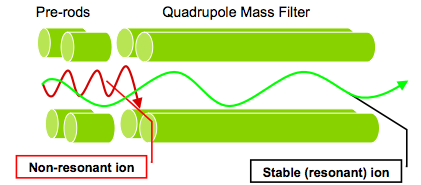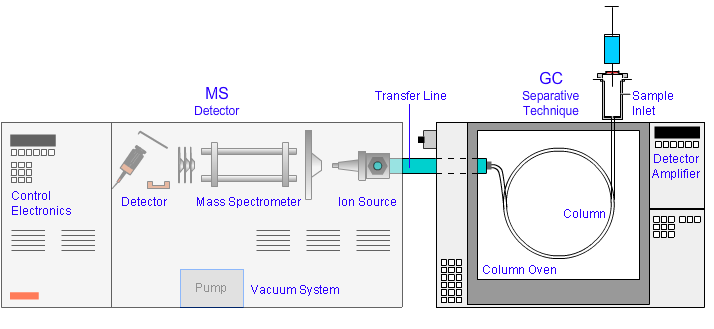In a series of posts, we are going to talk about Mass Spectrometry.
- Introduction-The different configurations and the Electron Impact process
- What types of mass analyzers are there?
- What type of detectors are there?
- What types of analysis can be done?
- How do you read the output?
- How do they come to a qualitative measure using software?
- How do they quantitate the results?
- Do you need chromatography if you are using Mass Spectrometry?
- Other topics of interest about GC-MS
In this post we talk mass analyzers. Just like the column in Gas or Liquid Chromatography the column is the analytical “heart” of the process because that is where separation occurs, in mass spectrometry the mass analyzer is the “heart” of the process.
Just like there are many different types of columns there are many different types of mass analyzers. There is:
- Single Quadrupole (Q)
- Triple Quad (QqQ)
- Ion Trap (IT, 3D-IT, OT)
- Linear Ion Trap (LIT, 2D-IT)
- Time of Flight (TOF)
- Ion Cyclotron Resonance (ICR, FT-ICR, FTMS)
- and Hybrids (Q-TOF, Q-Trap, Trap-TOF, etc)
Single analyzers by and large are obsolete. By far the most popular ones used today in the forensic world are QqQ, TOF and Q-TOF.
TOF is actually a remarkably simple process to understand. The separation between different ionized analytes is caused by the speed of ions to the detector at the end. Think of it like a race. It is a kinetic energy-based separation. Higher mass to charge ratio ions take longer in this race to reach the end.

- LECO’s TruTOF™ GC-TOFMS

- Agilent 7200 Quadrupole-Time Of Flight Mass Spec
On the other hand, there is the Triple Quad (QqQ). A quadrupole works a different principle. It separates by using opposing forces of electric fields (DC) and radio frequency fields on 4 different parallel equidistant rods (or poles). These forces are simultaneously applied, at diagonals, then switched. This application of DC and RF fields creates a path for certain ions to pass along the rods creating separation based upon their mass-to-charge ratio (m/Z). Some will take a path down the center never hitting a rod and reach the detector (resonant ion). Others will collide with a rod and becomes discharged and subsequently pumped to waste, never making it to a detector (non-resonant ion).

The actual motion of the ions getting through the quadrupole filter is actually more complicated than shown above. This is because the initial energy of the ions can have a spread of a considerable amount. This translates into different speeds through the rods, so not every ion moves exactly the same as some other ion of identical mass.

An alternating electric field makes ions change direction as they pass along the quadrupoles. The constant voltage drags them in one direction, towards one pair of electrodes. A small ion will be dragged a large distance by the alternating field, and will find itself in stronger and stronger regions of field until it collides with an electrode. A large ion will not be affected as much by the alternating field, but will gradually drift in the DC field. The alternating field is not strong enough to drag it back as it wanders, so it also collides with an electrode. An ion that is the right size drifts slightly in the constant part of the field, but is always dragged back by the alternating part. The alternating part, however, is not quite strong enough to make it spiral out of control into an electrode. Thus an ion just the right size is stable in this quadrupole field and reaches the end, where it can be detected.
In our next post, we ask the question “What type of detectors are there?”


